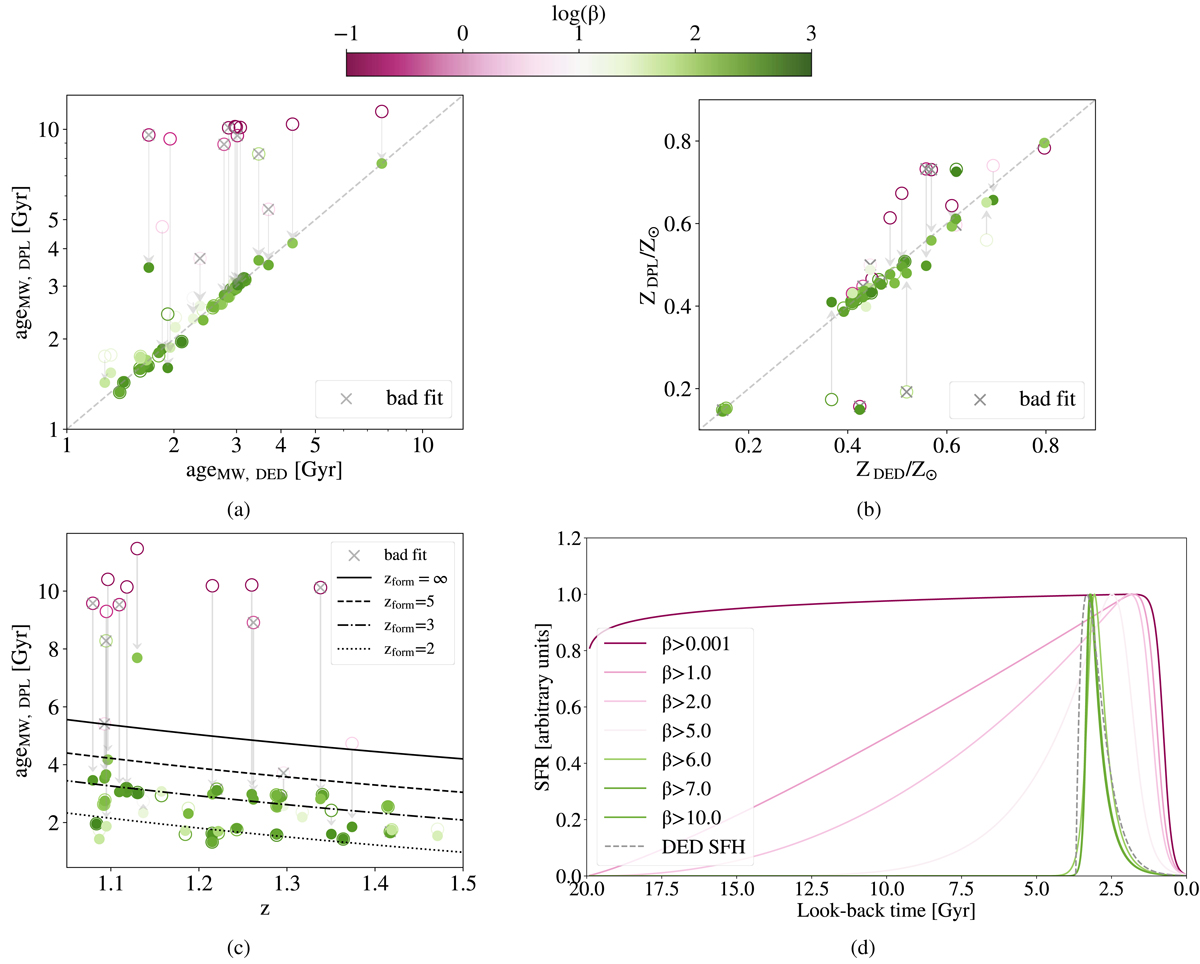Fig. B.1.

Download original image
Comparison of physical parameters obtained with delayed exponentially declining (DED) and double-power-law (DPL) SFH. In panels (a) and (b) we show the comparison of mass-weighted ages and metallicities estimated with the two SFHs. The points are colour-coded according to the parameter β of the DPL model, representing the rising slope of the SFH. We notice that the objects with extremely low β (represented with open circles) are the ones deviating more from the one-to-one relation. For this reason, we fitted those objects again with a more conservative prior on β (β > 10). The grey arrows show how the results converge to the correct relation with the new prior. In panel (c) we present the age-redshift relation with the same colour-coding as in the previous panels. In panel (d) the star-formation rate is shown as a function of the look-back time normalised to its peak for an object significantly deviating from the one-to-one relation in panel (a). The coloured curves represent how the resulting SFH obtained with the DPL model changes with different priors on β, colour-coded as presented in the legend; the grey dashed line shows the DED SFH, for comparison. We notice that above β > 6 the DPL model converges almost exactly to the DED model.
Current usage metrics show cumulative count of Article Views (full-text article views including HTML views, PDF and ePub downloads, according to the available data) and Abstracts Views on Vision4Press platform.
Data correspond to usage on the plateform after 2015. The current usage metrics is available 48-96 hours after online publication and is updated daily on week days.
Initial download of the metrics may take a while.


